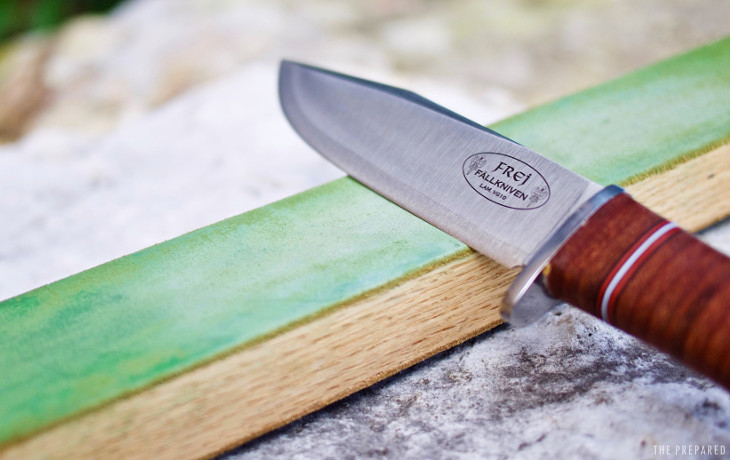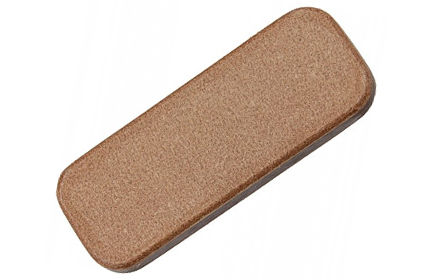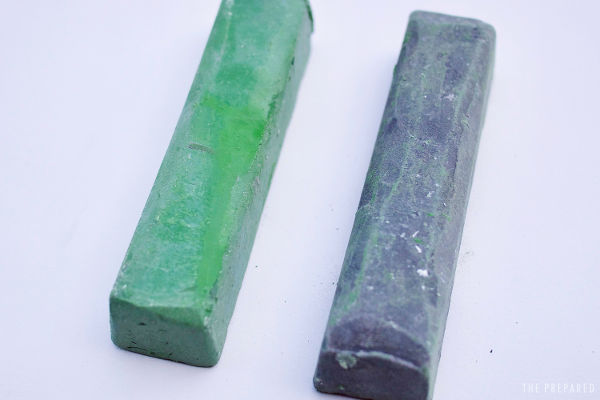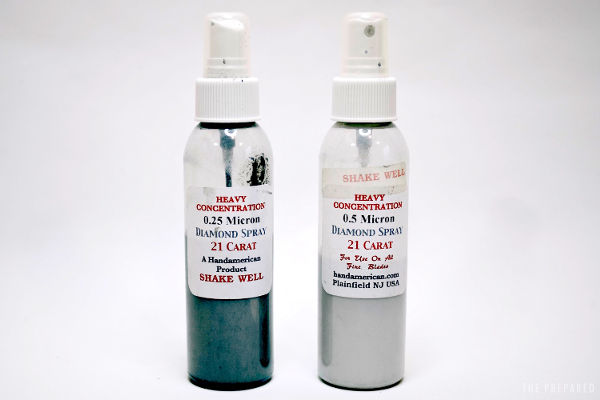Stropping a blade involves dragging it lightly over a piece of leather or similar material, called a “strop,” in order to sharpen the edge by polishing it.
Some experienced knife users rely on a stone to do the bulk of the “grinding” before using a strop to do the finishing polish work. But in recent years the practice of maintaining knives entirely by stropping them — without the additional use of stones, rods, or other sharpeners — has become popular in bushcraft and knife enthusiast circles.
Knife experts believe that learning to strop is the best way to sharpen and maintain a field knife in emergency preparedness, but it requires the right materials and some practice.
We’ve picked the best off-the-shelf products, along with tips on building your own DIY strop and basic beginner info on compound colors and materials below the fold.
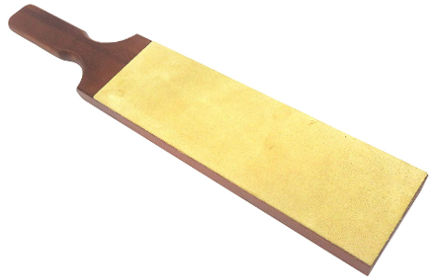
Best for home:
Taytools 10"x3" French Leather Paddle Strop
We’ve used a variety of strops in our knife career and recommend the $30 Taytools 10” x 3” French Leather Paddle Strop as the best choice on the market for most people — including beginners. It’s far cheaper than some smaller, less-capable strops from other makers.
This two-sided strop comes with one suede side (where you load the abrasive compound) and one smooth side (for finishing touches). Typically you only load the suede side of a strop because it’s the “rougher” side of the leather, but some enthusiasts do opt to put a fine compound like green or white on the smooth side for finishing an edge.
In any case, once a surface has been loaded with a particular type of compound, you’ll only ever load that same compound type on that strip. There’s no going back and forth, at least not easily enough to make it worthwhile.
For basic field knife maintenance, many people buy one paddle like this, load it with black compound, leave the smooth side bare, and they’re done. No need for other strops with other levels of compound.
If you’re looking to work with both black and green compound on a single strop with two suede sides, go with the $25 DLT XL Double-Sided Paddle Strop. Our knife experts have been using these for years and they’ve held up well with no complaints. You sacrifice the smooth finishing side in order to have two suedes, and the suede on these isn’t as suede-ey as on the French Leather strop, but it works just fine.
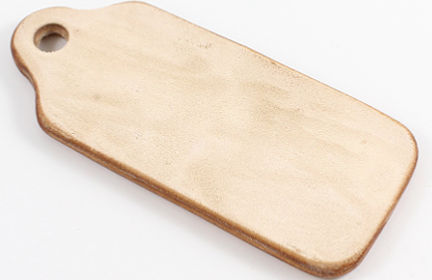
Best portable strop:
Sharpshooter Fine Leather Hone
You can’t do better than the mighty $20 Sharpshooter Fine Leather Hone for stropping in the field — a high-quality, two-sided (both sides are suede) leather strop that’s just big enough to get the job done but compact and lightweight enough to ride comfortably in your emergency pack.
This leather strop is stiff enough that it doesn’t need a wooden backing, and it sports a nice hole for a lanyard that can help you keep it steady when in use. With a small strop like the Sharpshooter, it’s harder to strop large blades, but it can definitely be done with a little care.
While in the bush, we carry a Sharpshooter loaded with green on one side and black on the other in a small dry bag of the type that people keep their cell phones in when camping. This $25 Loksak Dry Bags 4 Pack of assorted sizes is quite good, and we’ve used the same set for years, now. But any compact, waterproof cell phone storage solution will work.
Ultralight:
Brommeland Gunleather Micro
If you want to go even smaller, we keep one of the $28 Brommeland Gunleather Micro pocket strops in a secondary bug out bag. Though it’s not visible from the product photo, the newer version of this compact, two-sided strop consists of a stiff, near-indestructible piece of polycarbonate with suede bonded to each side. We linked to the bare leather version above, but they also sell a version pre-loaded with black and green compounds.
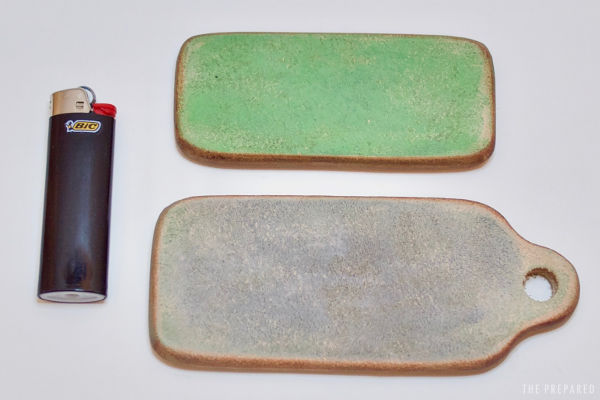
Note: We expect some preppers will skip the larger paddle strop for their home supplies and just buy the small portable ones. But stropping is a technique, not a piece of gear, and it’s much easier to learn how to strop on a larger strip. Don’t skip the bigger version unless you already know what you’re doing.
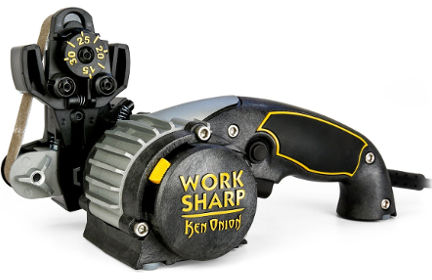
For serious knife nerds:
Ken Onion Work Sharp
Finally, for quickly and easily stropping a convex edge at home using a powered gadget with all the bells and whistles, the $130 Ken Onion Work Sharp is the current knife nut tool of choice. But, for obvious reasons (i.e. it plugs into a wall), it’s strictly a home or workshop option and overkill for most people.
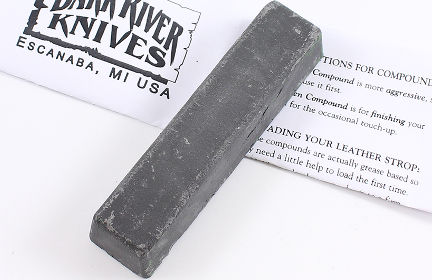
The bare minimum:
Bark River Black Bar
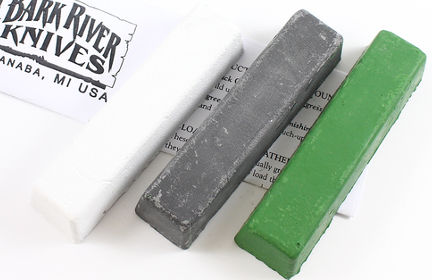
Complete kit:
Bark River Bar Set
Knife enthusiasts are big fans of Bark River compounds, even though they’re a few dollars more expensive, because their product is a little more aggressive than other brands. We like bars rather than liquids (see the section on diamond sprays further down) because they’re sturdy, won’t ever run out, and you can break them down into smaller chunks — all qualities that are great for prepping.
If you only buy one compound color, make it the $14 Bark River Black. If you want to use two colors, perhaps to load our recommended field strops, add the $14 Bark River Green.
Better yet, buy all three colors at once (for the price of two) and save some money in the long run. Our knife nerds rarely, if ever, use the white compound. But that finest level of polish helps the blade stay sharp longer, which isn’t a bad idea for a survival knife.
What you need to strop
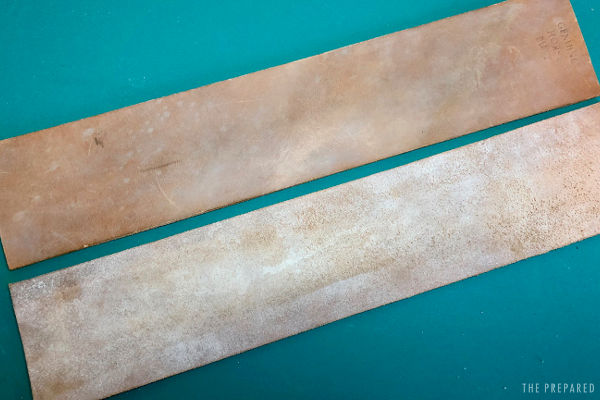
You only need one thing for the most basic possible strop: a perfectly flat strip of suitable material (typically leather) that you can lay on a hard surface and gently sweep your blade across.
Most stropping is done with a “loaded strop” to speed things up: a strop that has an abrasive “stropping compound” spread over the base material.
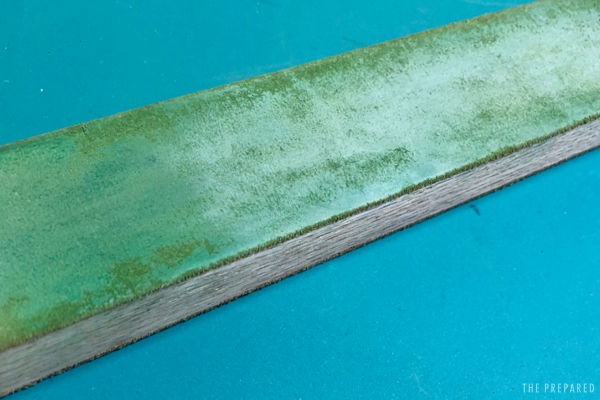
We like double-sided strops because you can either load two different compounds (typically black and green) or have one side with compound and the other side bare for the final polishing strokes.
Bigger strops are always better because it’s easier to use long, fluid strokes when moving the blade across the surface.
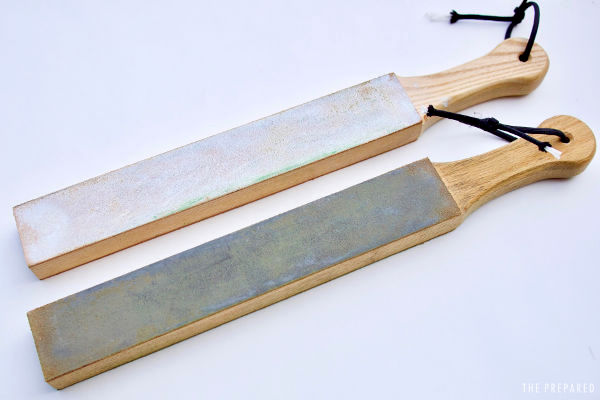
That reason alone is why we recommend large strops for a beginner’s home kit — let alone the added benefit of easier maintenance on larger blades. We also like strops that have a handle (“paddle strops”) and wrist/storage lanyard.
Stropping compound colors
The compounds you’ll load your strop with have a standard color scheme that denotes their “grit” (or “mesh”), which determines how much metal they take off with each stroke.
Black: a rough grit, used when starting with a dull blade and bringing that blade up to what most would consider “sharp enough.” Black is what many people use as the one and only phase of stropping for field knives.
Green: a fine grit, used to finish off or touch up a blade that’s already sharp, for a hair-popping edge. If a you use green regularly and never let your knife get less than razor sharp, then green is all you’ll ever need unless you damage the edge.
White: a very fine grit, used to polish the edge of a straight razor or a knife when you want an extreme level of sharpness.
Rougher grit compounds are more aggressive and remove more metal. Which means they work faster but produce edges that are less finely polished. Finer grit compounds remove less metal and work more slowly, but they’re how you get the best results.
For a hard-use survival knife, where you’re not taking care to constantly maintain a sharp edge by stropping regularly as you use the blade, probably 90% of the stropping you’ll do will be with the black compound.
Note that one compound color matches with one strop surface. If you use black on a piece of leather, you won’t later use white on that same strip.
So if you only have one strop, you’ll only use black. Going from black to green to white is overkill for a survival knife, however, but once you learn good stropping technique you’ll probably find yourself doing it just because you can.
Diamond sprays and pastes aren’t great for preppers
Diamond compounds have recently become popular as more aggressive, faster-working replacements for the traditional colored compounds. Diamond compounds come in two forms: sprays and pastes.
Diamond sprays consist of small flecks of diamond suspended in a liquid that is then sprayed onto the leather strop. A diamond paste is the same idea, but in a form that’s easier to spread on a strop and work into it.
You can explore these specialty items if you get serious about knife skills because they can get you to a fine edge much more quickly. But diamond spray comes in cheap spray bottles that break and leak. Diamond paste comes in tiny syringes that are good for a limited number of uses. So for prepping purposes, there’s no comparison to the durability and reusability of the traditional colored bars.
Make your own DIY strop
Given the simplicity of strops, it’s not difficult to make your own with a strip of leather, a flat piece of wood, and some glue.
Homemade strops can work just as well as store-bought strops, provided you’ve bought quality materials and are old enough to not eat more glue than you apply.
Denim and felt are also popular materials for homemade strops, and while these aren’t as durable as leather, you may not be able to tell much of a difference in performance once you load them with compound.
Making an improvised strop in an emergency
You can hack together a field expedient strop out of the back of a leather belt, or out of some layers of felt, denim, heavy cardboard, or newspaper stapled or glued to a board.
Although you don’t need compound — after all, your badass grandad didn’t use a bunch of fancy colored compounds when stropping his straight razor — some of the ingredients used to tan leather also make the leather decent for stropping. (Those same chemicals are why you never store your knife in a leather sheath.)
Bare leather works slowly and is mostly used for finishing a fine edge after a blade has already been run over a rougher grit, but it’s possible to just use the leather from start to finish.
Cardboard is a surprisingly-decent option when leather isn’t available. It’ll take a very long time, but it does work. For added grit, you can load a cardboard strop with any fine polishing compound — we’ve experimented with toothpaste, baking soda, and metal polishes, all of which got the job done surprisingly well.
Looking for more ideas of how to sharpen a knife with random stuff?
